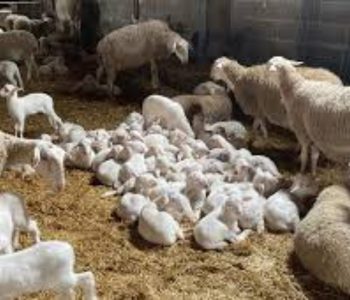Boosting Ovulation in Ewes with Protein Supplementation: Findings from EEA Mercedes
The productivity of sheep flocks in Argentina remains below the species’ potential, with lambing rates typically not exceeding 60-70%, despite high pregnancy rates during fall mating. This discrepancy is mainly attributed to peripartum mortality. Reproductive and nutritional management alternatives, such as pre-lamb shearing, have been shown to improve lamb survival, particularly in categories of ewes (multiparous and first-time lambers) that experience the greatest losses at parturition.
Recent studies suggest that the impact of these techniques is more pronounced in ewes that are prone to higher losses during lambing. However, the percentage of ewes with twin pregnancies in our flocks is low (8-15%). Existing information indicates that it is possible to modify ovulation rates without altering body weight or condition by using short-term nutritional supplementation during the mating period. Studies have shown that when energy is not a limiting factor, the protein content of the diet plays a crucial role in increasing ovulation rates.
Nutrition significantly impacts ovulation rates, with higher body condition ewes showing higher ovulation rates (static effect). The dynamic effect, or flushing, refers to an increase in ovulation rates induced by weight gain and improved body condition three weeks before mating. The timing of effective short-term supplementation is limited, with protein supplementation being most effective when administered 8 to 5 days before ovulation. Shorter supplementation periods may not yield the desired effects.
To effectively increase ovulation rates, synchronization of estrus is essential, which can be efficiently achieved using synthetic prostaglandin analogs. In a designed experiment at EEA Mercedes, Corrientes del INTA, the hypothesis was that short-term protein supplementation during mating could increase ovulation rates in ewes without altering body weight or condition. The objective was to evaluate the effect of protein supplementation on body condition, fertility, and prolificacy of adult ewes mated in the fall.
The study, carried out over two consecutive years, involved 90 ewes and 4 rams per year. The ewes were divided into two groups: a control group and a supplemented group, which received a daily ration of sunflower pellets with 38% crude protein for 18 days. Estrus synchronization was performed on both groups using synthetic prostaglandin. Various parameters were measured, including body condition, weight, and pregnancy diagnosis through ultrasound.
Results indicated that the forage availability during the service period was adequate to meet the nutritional needs of the ewes. The supplemented group showed a significant increase in multiple pregnancies compared to the control group, although body condition and weight did not differ statistically between treatments. The average supplement intake did not exceed 522 g/day, providing more than the 180 g of crude protein necessary to achieve the desired effect. The pregnancy rate was high (>96%) in both groups, but the percentage of multiple pregnancies doubled in the supplemented group.
Conclusions
- The average supplement intake provided the required protein to enhance ovulation rates.
- No statistical differences were observed in body weight or condition due to supplementation.
- Both treatments resulted in high pregnancy rates (>96%).
- Supplementation significantly increased the percentage of multiple pregnancies, indicating a successful increase in ovulation rates.
Source: INTA
